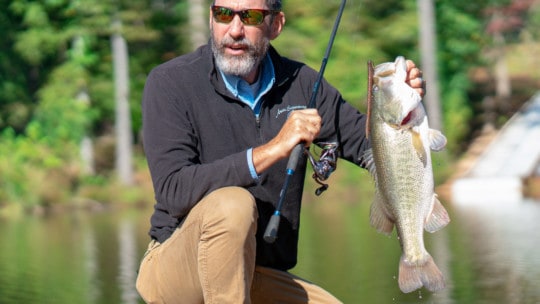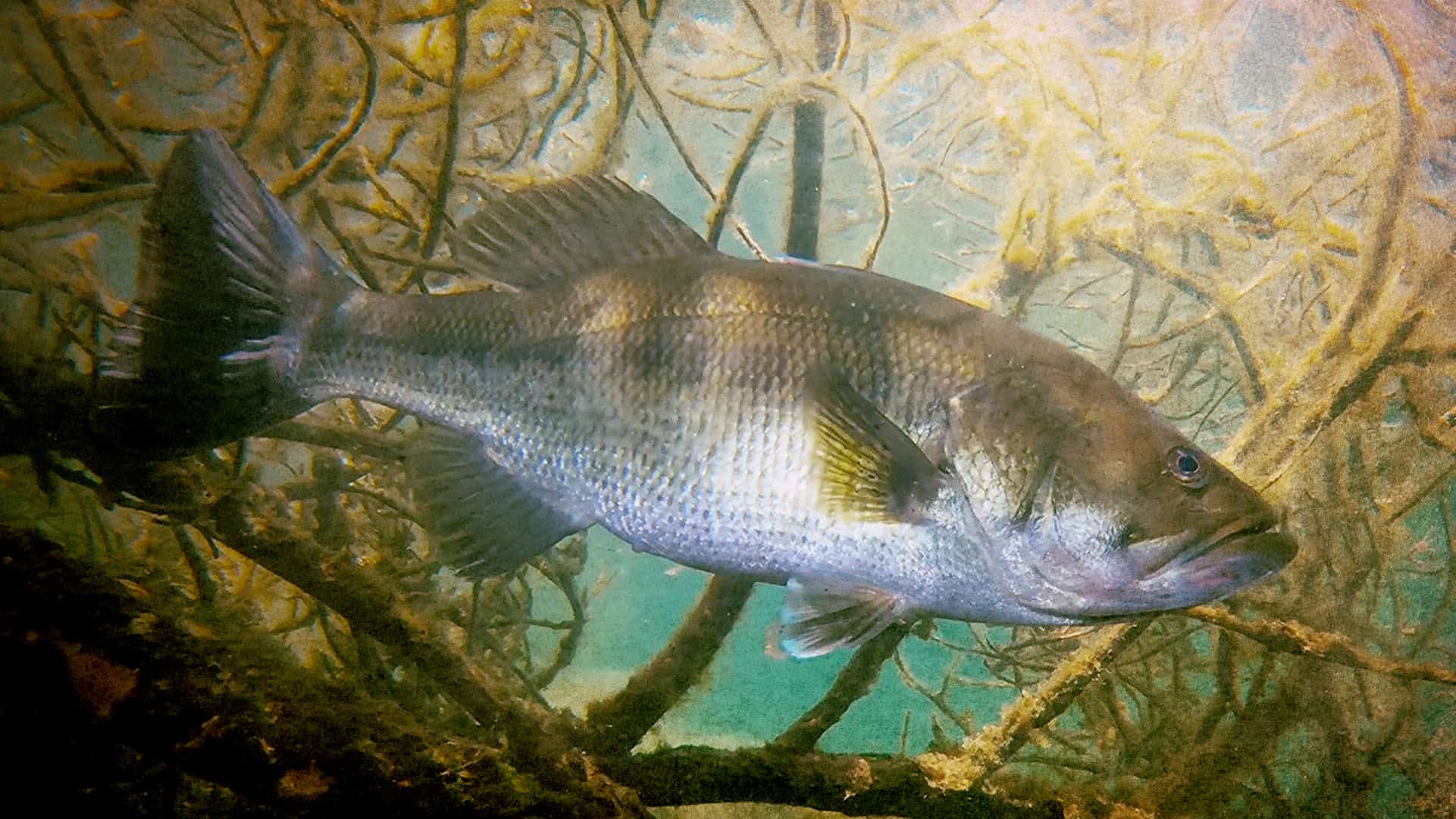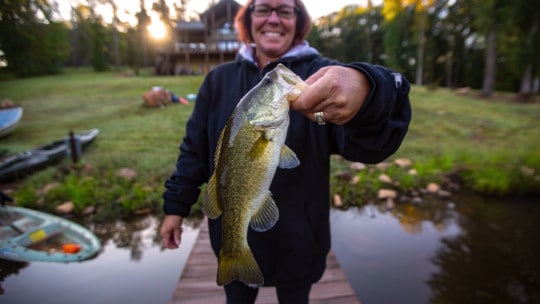
How to Create a Pond Habitat for Trophy Bass
In the first Living Rural episode, fisheries biologist Greg Grimes shared the forage stocking strategies needed to grow trophy bass. While a mix of shad, minnows, crawdads, and rainbow trout are great food sources, bluegills are the real key to a trophy-bass pond habitat.
In this Living Rural episode, Greg explains how to create the optimal bluegill habitat needed to optimize bass growth. Here are his go-to secrets for success.
Pond Habitats are a Numbers Game
If you’d love to grow bigger bass, Greg says you’ll need to show the bluegill some love, too. Having worked with thousands of clients and ponds, one commonality he’s seen is the abundance of bluegill—all bass need to grow big, which means creating the right bluegill habitat.
Greg recommends a 48:1 stocking ratio when first establishing pond habitat. Stocking 2,000 bluegill, 400 shad, and approximately 50 bass fingerlings will prevent ponds three acres and larger from becoming bass dominant. Bass won’t grow big, he says, unless you’ve minimized their competition for food.
It won’t be long before the bass begin growing—decimating the bluegill population in the process. So, replenish initial bluegill numbers by creating areas conducive for spawning—and growing bigger themselves—to ensure they remain plentiful for bass to gorge on.
Setting up the Spawn
Regardless of species, all bluegill spawn throughout the summer. Their specific egg production, however, will vary based on the energy needed to build their beds. This is Greg’s key to creating an environment where more of them can survive and thrive.
Like humans, bluegill want to protect their children. For starters, seeking out places that offer them natural shelter. Greg points out that big rocks, broken concrete, and even fallen trees provide safe havens for their fry needs. If a beaver’s taken down a tree along your pond’s bank line, leave it where it lays. It’ll serve as prime bluegill reproduction habitat, he says.
Creating this protective habitat will maximize bluegill growth rates needed to bulk your bass up. It takes 100 one-inch bluegills to equal the weight of one four-to-five-inches, significantly reducing the energy bass will have to expend feeding on them. When you eventually land that once-in-a-lifetime bass, you’ll have their supersized bluegill buffet to thank!
Using An Artificial Habitat
Greg’s a big believer in supplementing your pond’s natural habitat with artificial habitat, as well. Here are some of the products he recommends:
Safe Haven, Root Wad, and Trophy Tree are MossBack products typically used to help predator fish hide into ambush prey. Each can be placed in shallow-water spawning areas to create additional habitat for bluegill to take cover in.
While Greg acknowledges Christmas trees are time-tested attractants, he also points out that it’ll only be a matter of time before they eventually decompose.
There’s clearly no shortage of artificial habitat options that will help your bluegill population flourish.
Breaking Up The Lake
Greg suggests thinking about your pond in terms of sections and providing the right kind of habitat for each. Namely, habitat for spawning, protection, and travel paths. Bass love to move through uneven areas—like humps, channels, ridges, or ditches—to access places to “loaf” around. For bass, loafing equals growing.
Grass is another natural lake habitat. Ideally, you want to aim for 10-20% grass coverage to create a habitat for bluegill to hide in. Ponds contain more than 20% grass will force bass to expend excess energy they’d otherwise use to grow nice and plump.
Creating optimal bluegill habitat is just one of the smart forage stocking strategies that lead trophy-bass pond management. See what you should be adding to your pond and when you should be adding it here.





